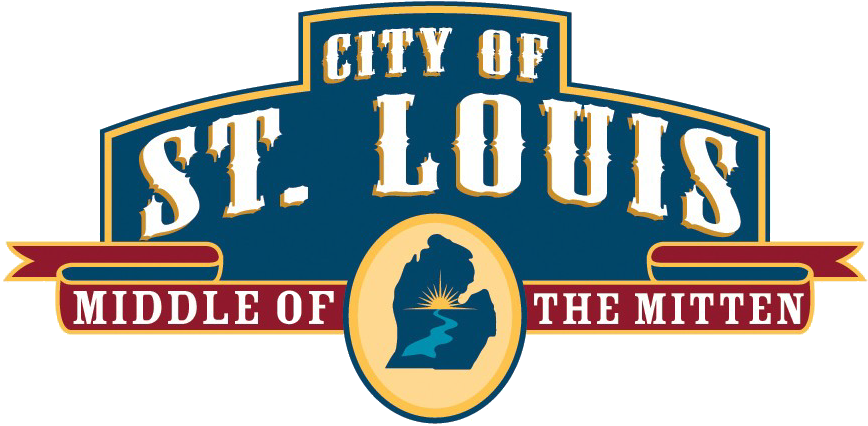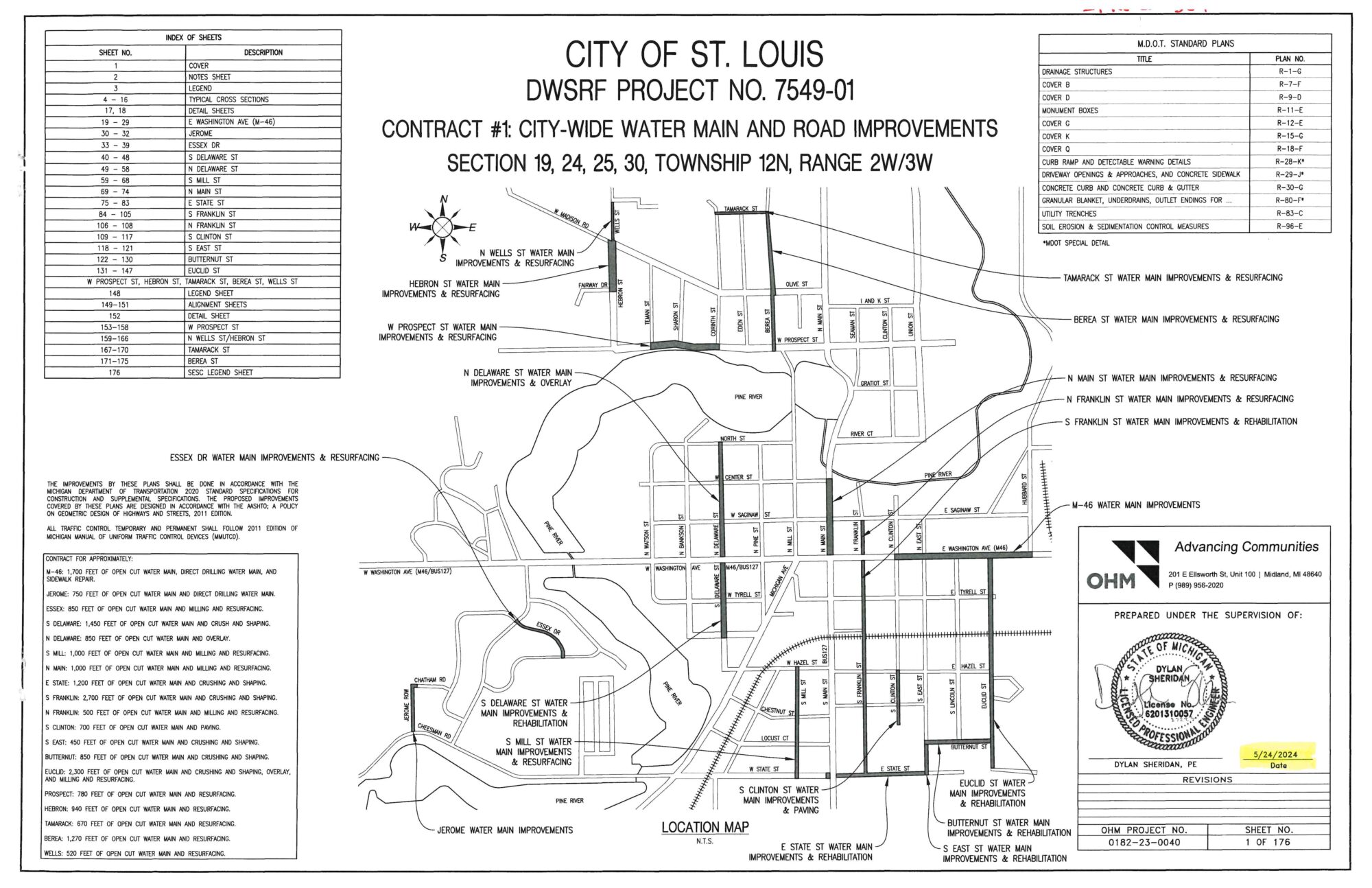Staff
Operators
St. Louis, MI 48880
Utility Billing Clerk
St. Louis, MI 48880
After Hours/Holidays: Contact Gratiot County Central Dispatch for assistance with EMERGENCIES at 989-875-7505. There is a $100 charge for after hours and holiday service calls if the emergency is considered the responsibility of the homeowner. The $100 fee is added to the homeowner's next utility bill.
DWSRF Water Main Project
The City received a $17 million grant from the State of Michigan to replace approximately 4 miles of watermain in the City's water system.
The City-wide DWSRF 24 Water Main and Road Improvement program covered by the grant includes work on the following streets:
- Hebron - Fairview to Olive/Madison
- Prospect - Corinth to Teman
- Tamarack - Berea to Corinth
- N. Main - M46 to Center
- Jerome - Cheesman to Chatham
- Butternut - Euclid to East
- S. Franklin - M46 to State
- State - East to S. Main
- N. Delaware - M46 to North
- S. Clinton - Hazel to dead end
- Wells - Olive to a point 600 feet north of Olive
- Berea - Prospect to Tamarack
- M46 - Clinton to Hubbard
- S. Mill - Hazel to State
- Euclid - M46 to Butternut
- N. Franklin - M46 to Saginaw
- East - Butternut to State
- Essex - Devon to York
- S. Delaware - M46 to Crawford
This project will be installing new 8" and 12" water main and abandoning the existing water main. New water services and shut-off valves will be installed from the new main to your existing service line a the property line.
A construction contract has been entered into with Malley Construction, Inc. out of Mt. Pleasant. OHM Advisors out of Midland is the Design Engineer and Construction Representative for the City.
Residents along affected streets will be notified once the contractor provides the City with his construction schedule. Per the grant, the project must be completed by September 2026.
GAWA
The St. Louis water system consists of approximately 35 miles of water main ranging in size from 4 inch to 16 inch. In the Fall of 2015, the City switched from providing water to its customers from municipal wells to treated water provided by the Gratiot Area Water Authority (GAWA). GAWA consists of the Cities of Alma and St. Louis and provides treated water to both communities from its water treatment plant located in the City of Alma. Water is supplied to GAWA via six groundwater wells (three recently constructed with funds provided by the City of St. Louis and the USEPA) and the Pine River in Alma. An additional well is expected to be constructed to provide the well capacity St. Louis had in its own municipal well system.
The Federally mandated Consumer Confidence Report (CCR) has been published annually since 1998. This testing is performed at the GAWA water treatment plant, the GAWA well fields, Pine River intake, the Alma distribution system and the St. Louis water distribution system regularly. The testing has shown that the water being supplied to our customers is safe and well within the State and Federal guidelines. Consumer Confidence Reports are available to all water customers. The reports can be downloaded below. Copies are also available upon request at City Hall.
Water system pressure is maintained by two elevated water storage towers located within the City. The 500,000-gallon facility was upgraded and painted in 2018 while the 250,000-gallon facility was constructed and put into service in 2016. These two towers allow the City to maintain a system pressure of between 55-65 psi. Fire service is provided from over 260 fire hydrants. In 2020 the City purchased 259 million gallons of water from GAWA, for an average daily water flow of 709,589 gallons.
Planning
The City has completed a Water Reliability Plan as well as a Water Asset Management Plan which both incorporate a 20-year water master plan. A Water Rate Study was also prepared as an integral part of the Asset Management Plan. City staff performs annual planning and budgeting for the needed improvements.
Water Quality Reports
Water Quality Reports for the City of St. Louis report the drinking water quality for a calendar year. This information is a snapshot of the quality of the water provided. These reports are typically available in the summer following the year end. Included are details about where your water comes from, what it contains, and how it compares to Environmental Protection Agency (EPA) and state standards.
Documents
-
-
pdf
-
pdf
-
pdf
-
pdf
-
pdf
-
html
-
pdf
-
pdf
-
pdf
-
pdf
-
pdf
-

